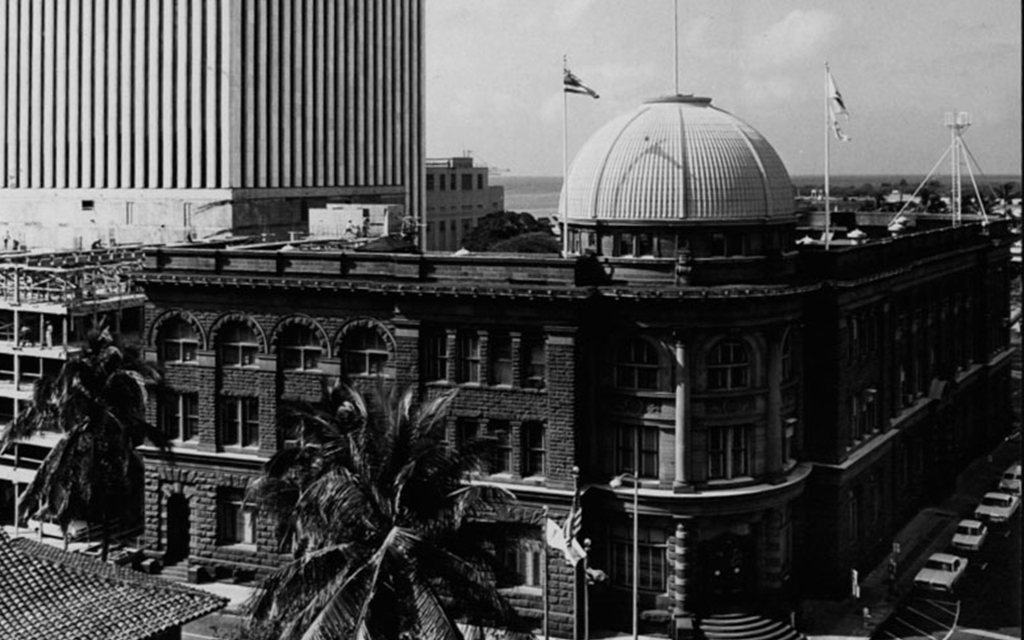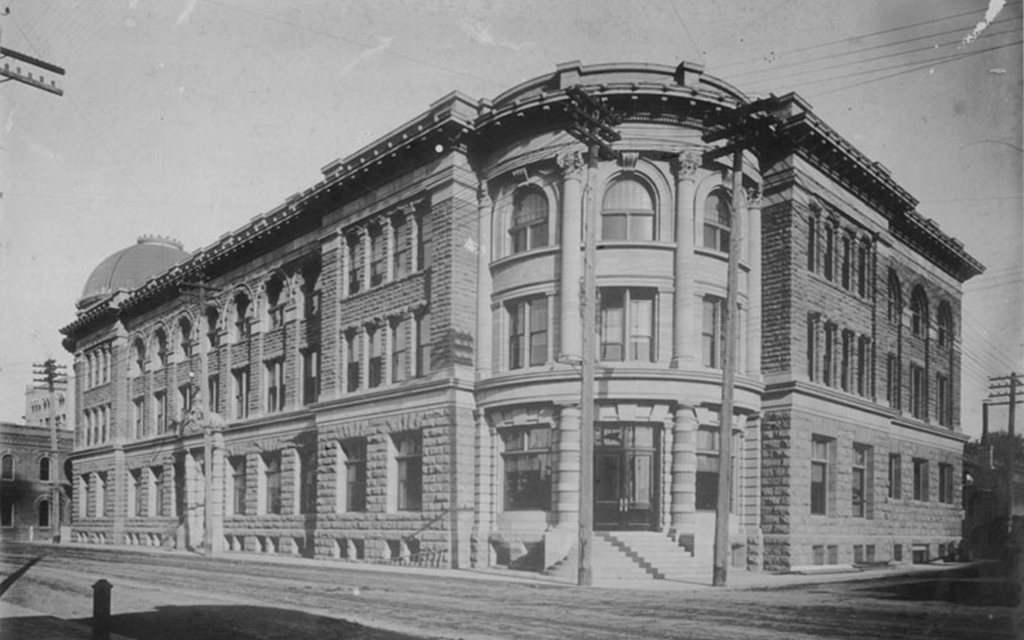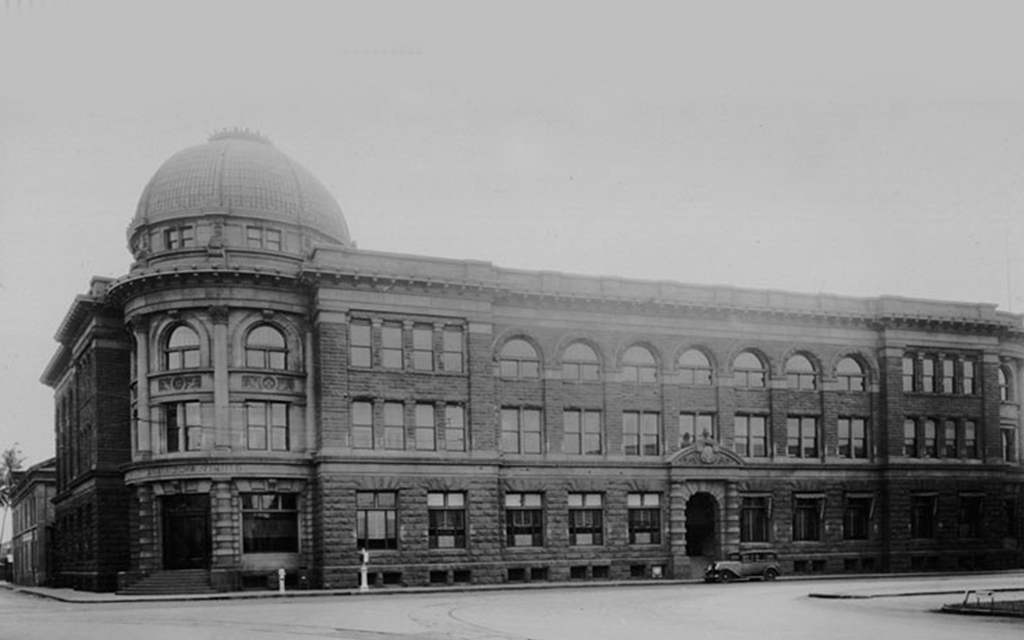Hackfeld Gate
Business Developtment
How everything begann ...
On September 26, 1849, sea captain Heinrich (Henry) Hackfeld arrived in Honolulu with his wife, Marie, her 16-year-old brother Johann Carl Pflueger and a nephew BF Ehlers. Having purchased an assorted cargo at Hamburg, Germany, Hackfeld opened a general merchandise business (dry goods, crockery, hardware and stationery,) wholesale, as well as retail store on Queen Street.
In 1850 he moved to a larger location on Fort Street. This store was so popular, it became known as “Hale Kilika” – the House of Silk (because it sold the finest goods available.) As business grew, the nephew took over management of the store while Hackfeld traveled the world for merchandise. The company took BF Ehlers’ name in 1862.



These images show the former Hackfeld, then AmFac building at Queen and Fort Streets (it was demolished in 1970.)
Hackfeld developed a business of importing machinery and supplies for the spreading sugar plantations and exported raw sugar. H Hackfeld & Co became a prominent factor – business agent and shipper – for the plantations.
Rodiek House in Honolulu
This 5.7-acre estate in the heart of Nu‘uanu, is one of the last great Honolulu estates of the glamorous Big Five era. The Classical Revival house was built in 1905 by George Rodiek, general manager of H. Hackfeld and Co., which later became Amfac Inc., and the estate became a hub of high society under the ownership of Henry Alexander Walker, president of Amfac and the Hawaiian Sugar Planters’ Association. Architect Bob Fox says, “It’s an extraordinary historic asset. It’s a turn-of-the-century Hawaiian estate, and there’s very little like it left on the island, certainly not in central Honolulu.”
Today the property and the house is owned by Forshang World Foundation – a buddhist organization headquartered in Taiwan. The building is still in it’s original condition and located at the Pali, often mistake for the Taiwan General Consulate, which is located two houses up the Pali.


